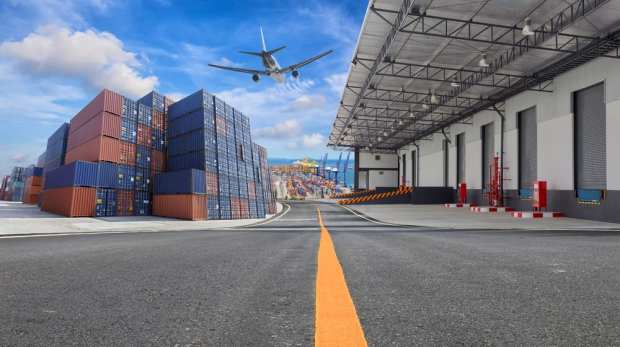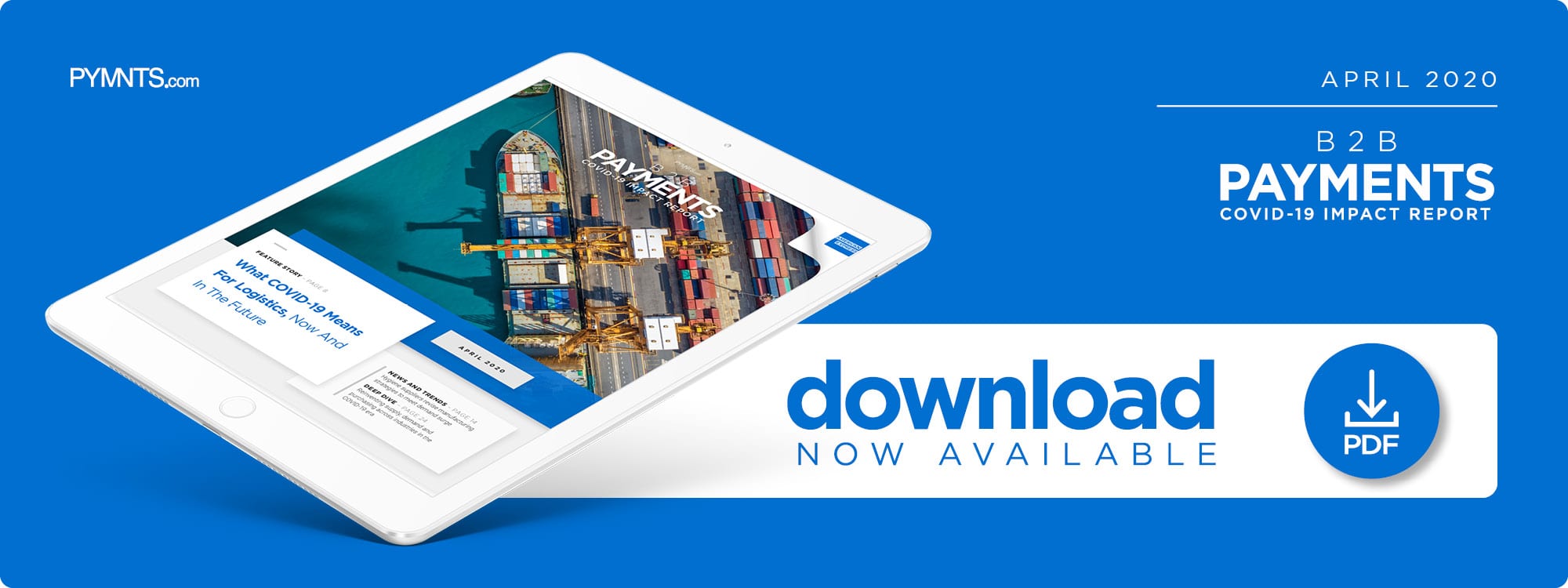What COVID-19 Means For Logistics, Now And In The Future

COVID-19 has interrupted global supply chains, leaving companies scrambling for alternate ways to keep operations running smoothly. However, businesses can learn lessons from this impact should a global disturbance arise in the future, says Brian Reed, vice president of supply chain optimization for global transport and logistics company GEODIS. In the B2B Payments: COVID-19 Impact Report, Reed explains how creating flexible, diverse supply chains and adopting digital shipment tracking tools helps build businesses’ resilience.
The coronavirus pandemic has interrupted commerce processes ranging from product creation to sales.
Countries around the world have temporarily closed factories to enable their employees to stay home and limit the virus’s spread. This has led to reduced inventory production in many sectors, and the resulting shortages have been felt in many industries, including that of medical supplies, which has seen emergency purchasing push demand.
Distributors buying goods from factories that have continued or resumed operations have had their own struggles. B2B resellers may find it difficult to ship items from manufacturers to their international clients because efforts to contain the virus have led to policies restricting air travel and ocean deliveries. A mid-March survey of 600 supply chain managers found that approximately 75 percent of respondents are experiencing transportation issues in their supply chains. Corporate buyers waiting for these goods to arrive are then challenged when serving their customers.
PYMNTS recently caught up with Brian Reed, vice president of business development and supply chain optimization at global transport and logistics company GEODIS, to discuss how the pandemic and efforts to reduce its spread are impacting global supply chains as well as identify the lessons companies should take from this emergency. The pandemic’s impacts have been widespread, but logistics businesses, their buyers and other companies are doing their best to rally and keep operations running as smoothly as possible.
Air Transport Costs Soar, Ocean Shipments Trickle Back
The pandemic has had significant impact on air cargo transport because the bellies of passenger airplanes are used to store shipments, Reed said. This transit channel has become vastly restricted because countries have imposed travel bans on international flights to prevent infected individuals from spreading the virus across borders. Some consumers are also voluntarily avoiding transit to reduce their chances of exposure.
“Air cargo is … in a state of chaos,” he explained. “Airlines around the world have parked all these jets. All that capacity’s gone. You’re starting to see it come back a little bit where those passenger planes are starting to be flown as cargo-only, but that’s a fairly expensive proposition.”
The greater cost of air shipment may discourage nonessential businesses from taking advantage of passenger-turned-cargo planes, Reed added, but companies providing items that must be delivered swiftly, such as medical supplies, are using such options to maintain their supply chains. These businesses do not have the luxury of turning to slower, cheaper methods of transport because delivery delays could have negative public health impacts.
Ocean carriers are popular, low-cost transportation methods when transporting materials from China, but the pandemic’s emergence in the country greatly impacted maritime shipments. The temporary shuttering of many Chinese factories meant fewer goods were readied for shipment, and quarantine-related roadblocks also made it difficult to transport products from factories to ports.
Many cargo carriers saw these unreliable supply chains and deemed it not financially sound to arrive at China’s ports, leaving full containers of goods idle, Reed said. China is currently reviving its factories after enduring the pandemic, which could mark a shift in conditions as more goods can be created, and lifted quarantines reduce barriers to domestic transit.
Land Transport Keeps on Trucking
Enabling cargo to leave a country and reach international buyers’ shores is only part of the transportation battle. Shipments carried overseas or by air must still be transported to their destinations once they land. Truckers are one major resource transporting these items and those produced domestically. The U.S. has leaned heavily on trucking to move groceries and medical supplies to market during the current rush of demand, and the sectors’ workers have so far largely been spared from infection.
GEODIS has nonetheless sought to maintain social distancing procedures as a precaution and discontinued procedures that require drivers to have documents signed upon delivery, instead having them drop those slips off for later collection. Some even have drivers ask customers to sign digitally and remotely.
Digital Surge and Resilience Strategies
Many logistics businesses regarded digital tools like software enabling electronic signatures or shipment location tracking as unnecessary expenses prior to the emergence of social distancing guidelines. The COVID-19 pandemic is now prompting renewed interest and accelerated uptake, Reed explained.
“People before said, ‘Oh it’s kind of a luxury. It’s neat, but I don’t have a business case for it,’” he said. “Well, this is your business case. COVID-19 is showing that some of those technologies have bigger impacts than we thought originally.”
Companies are likely to emerge from the crisis with more digital-savvy operations, Reed added, but that will not be the only major operational change. The pandemic has demonstrated a need to think about supply chains in new ways. Companies cannot simply look at past data to create models on which they can base long-term predictions. They are instead limited to short-term predictions and seeing what they can learn to guide them during future crises.
Key lessons are already emerging, however, including the need to build backup options into supply chains and create flexible business processes. Companies that rely on global partners are proving better equipped to endure pandemic-related disruptions. GEODIS has centers in China, Mexico and Serbia, Reed said, and this decentralization has enabled it to keep some of its locations open while others closed or shifted to remote work.
“If you [do not have] a resilient supply chain that’s flexible and can move around and change geography and change suppliers … you’re just scrambling and don’t have time to predict, and you’ll continue to scramble,” he explained. “The people who will be successful in the future are ones who are working now to set that up, who are starting their research and plans.”
Companies should use their current struggles as inspiration to develop broader supplier and provider partner bases that are not tied to select companies or geographies, Reed advised. COVID-19 may have caught businesses flatfooted, but they can start redesigning their approaches now to avoid facing the same problems should another global disturbance arise.

